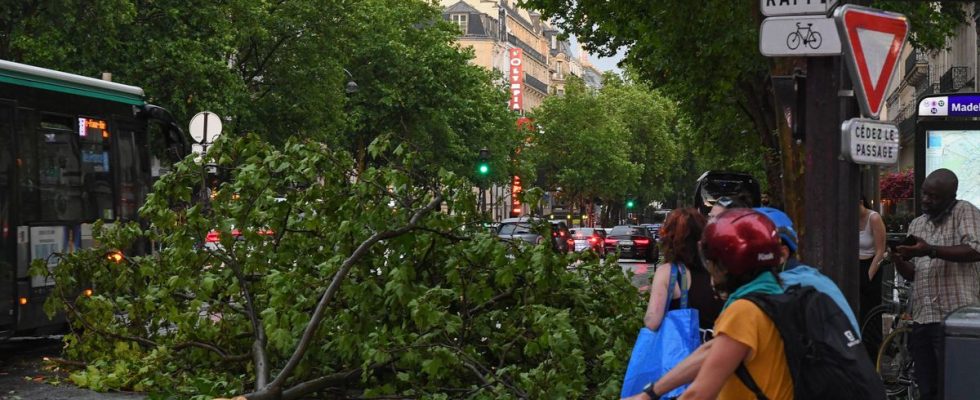Right now, insurers must be watching the sky (or their weather apps) with excitement. After a stormy weekend, 15 French departments have been placed on orange alert against storms. At the same time, an earthquake caused significant material damage in western France. What are the good reflexes to take in the event of a storm to get compensation? What to do when you have suffered material damage after an earthquake? How does insurance cover this type of damage? 20 minutes make the point.
What damage is covered in the event of an earthquake?
A strong tremor was felt on Friday in Charente-Maritime. If the human toll is limited (one lightly injured), more than 5,000 buildings were damaged. “In this rural area, these are mainly old houses, with very limited resistance to earthquakes,” said Jean-Vincent Raymondis, interviewed by AFP. The CEO of this insurance expertise firm estimated between 150 and 200 million euros the total cost of the damage caused by the earthquake.
Faced with the situation, the Minister of the Interior Gérald Darmanin announced on Saturday “an accelerated procedure for recognizing a natural disaster”. As reminded France Insurers, the main professional association of insurers, the damage caused can be compensated once the status of natural disaster has been declared and published in the Official Journal, and if the property of the insured is guaranteed in damage insurance. In this case, direct material damage, any demolition costs, or study costs for the restoration of the property may be compensated.
“In France, we have this regime for natural disasters, which means that we can pool this risk for all the people insured for damage. We must maintain the principle of this system, which is very protective for the insured”, recalled Florence Lustman, president of France Assureurs a few months ago on European 1.
After damage caused by the storm, what reflexes to adopt?
First reflex: contact your insurer urgently to take stock and find out about your guarantees. It is then essential to gather as much evidence of the claim as possible. Then, it is imperative for the insured to shelter all the goods to avoid aggravation of the damage.
Depending on the placement (or not) of the municipality in a state of natural disaster and the guarantees taken out by the insured, the conditions of coverage may change. “Today, on average, an individual pays 25 euros per year to insure against these climatic events”, indicated Florence Lustman.
In France, the cost of damage caused by natural disasters has been estimated at 10 billion euros in 2022. A sad record, which France Assureurs attributes to “the intensification of climatic phenomena” and an increase in their frequency.
How are insurers adapting to climate change?
To cope with the “intensification” and “rise” of climatic phenomena, insurers try to anticipate. “In 2021, we tried to project weather phenomena over the next thirty years with specialists. We believe that the cost of these natural phenomena will double compared to what we have seen over the last thirty years. This cost could reach more than 140 billion euros for France, cumulatively, over the next three decades, ”explained Florence Lustman a few months ago.
And the trend has already been worrying for quite some time. According to France Assureurs, climatic events cost around one billion euros per year in the 1980s. Over the five years leading up to 2022, the cost rose to 3.5 billion euros. Before an “annus horribilis” last year, which saw the damage rise to 10 million euros.
According to Swiss Re, a kind of insurers for insurers, climatic disasters (hurricanes, earthquakes, floods) cost insurers $72 billion in the first quarter of 2022.

